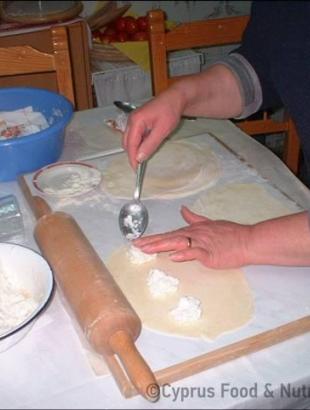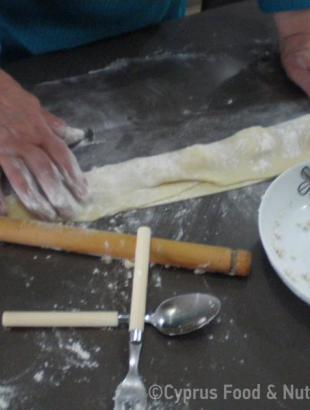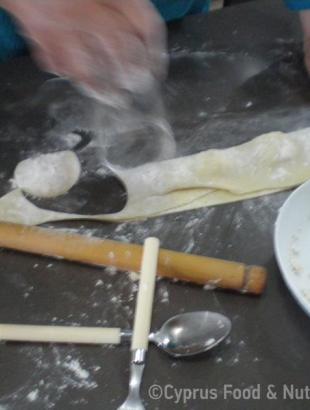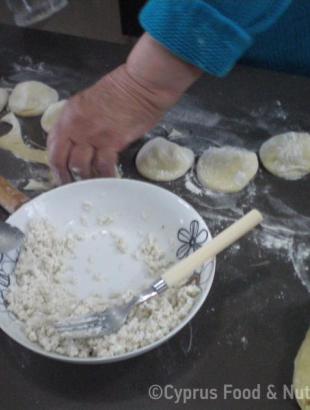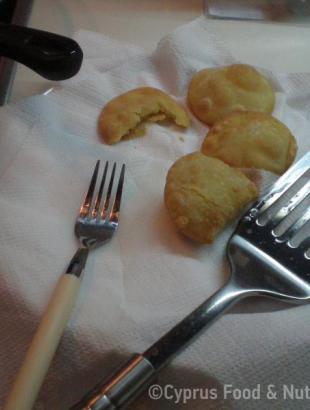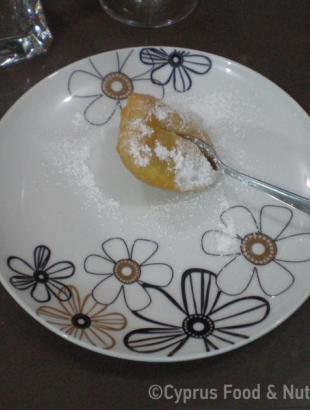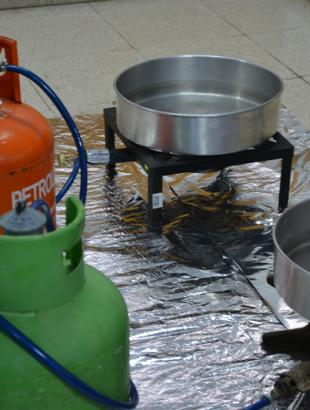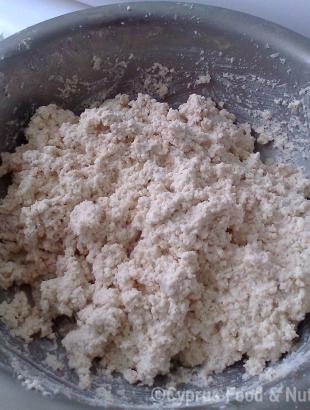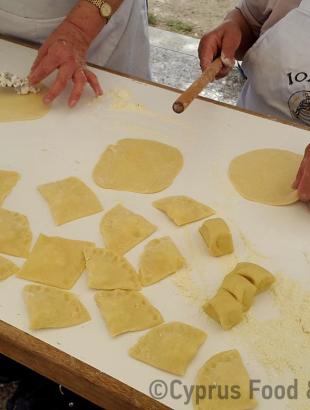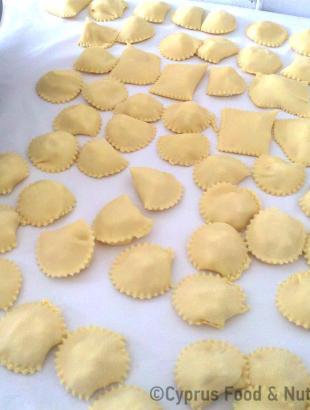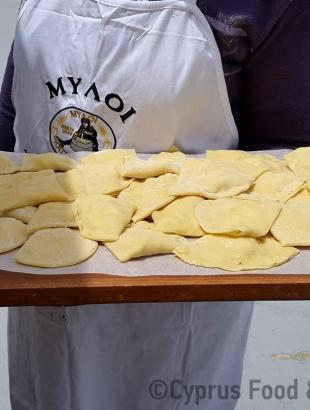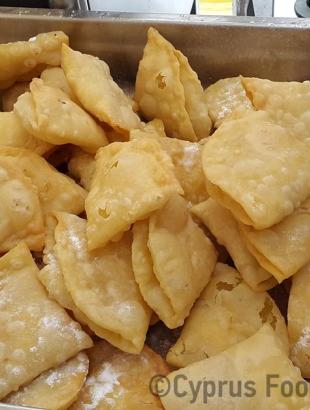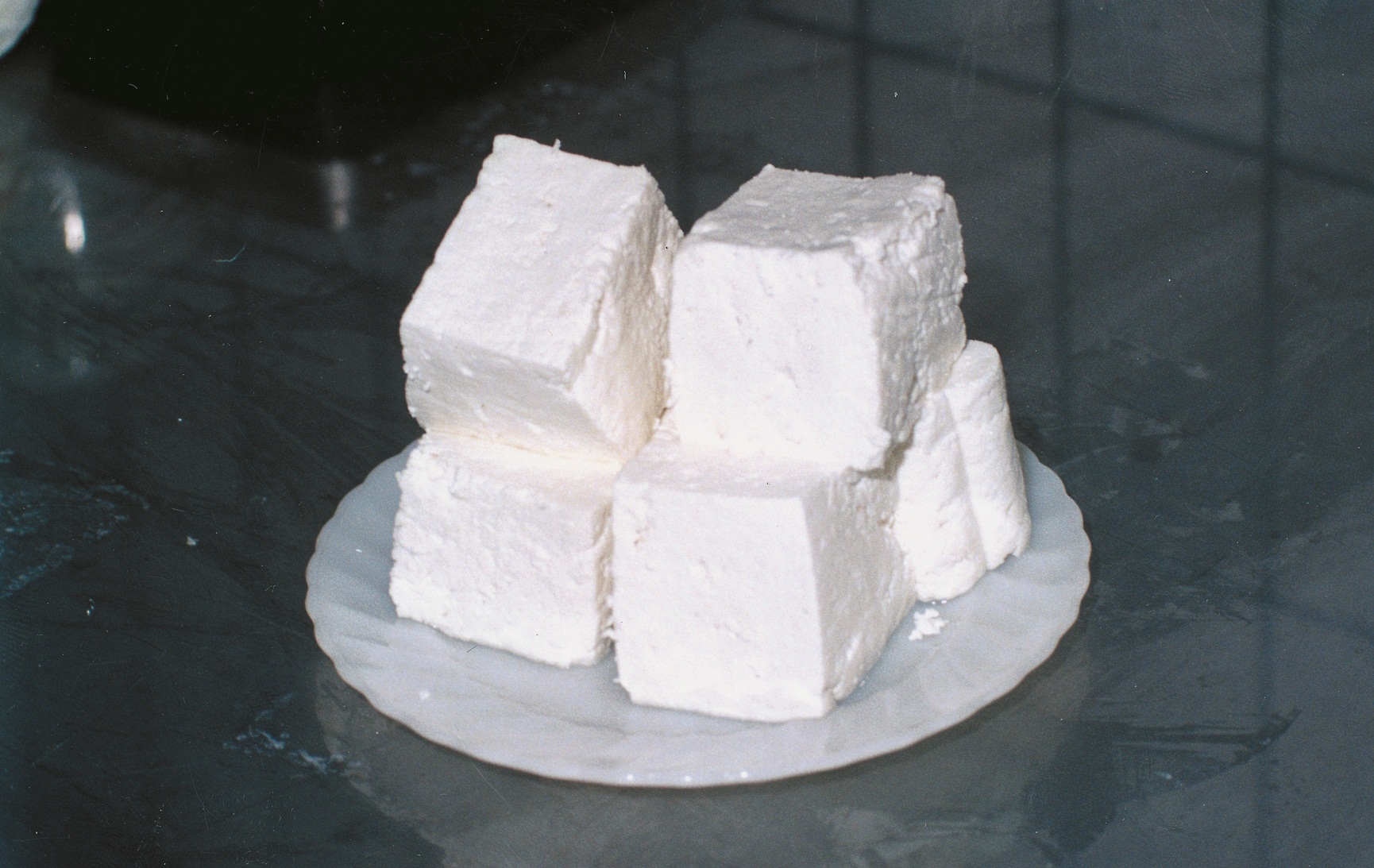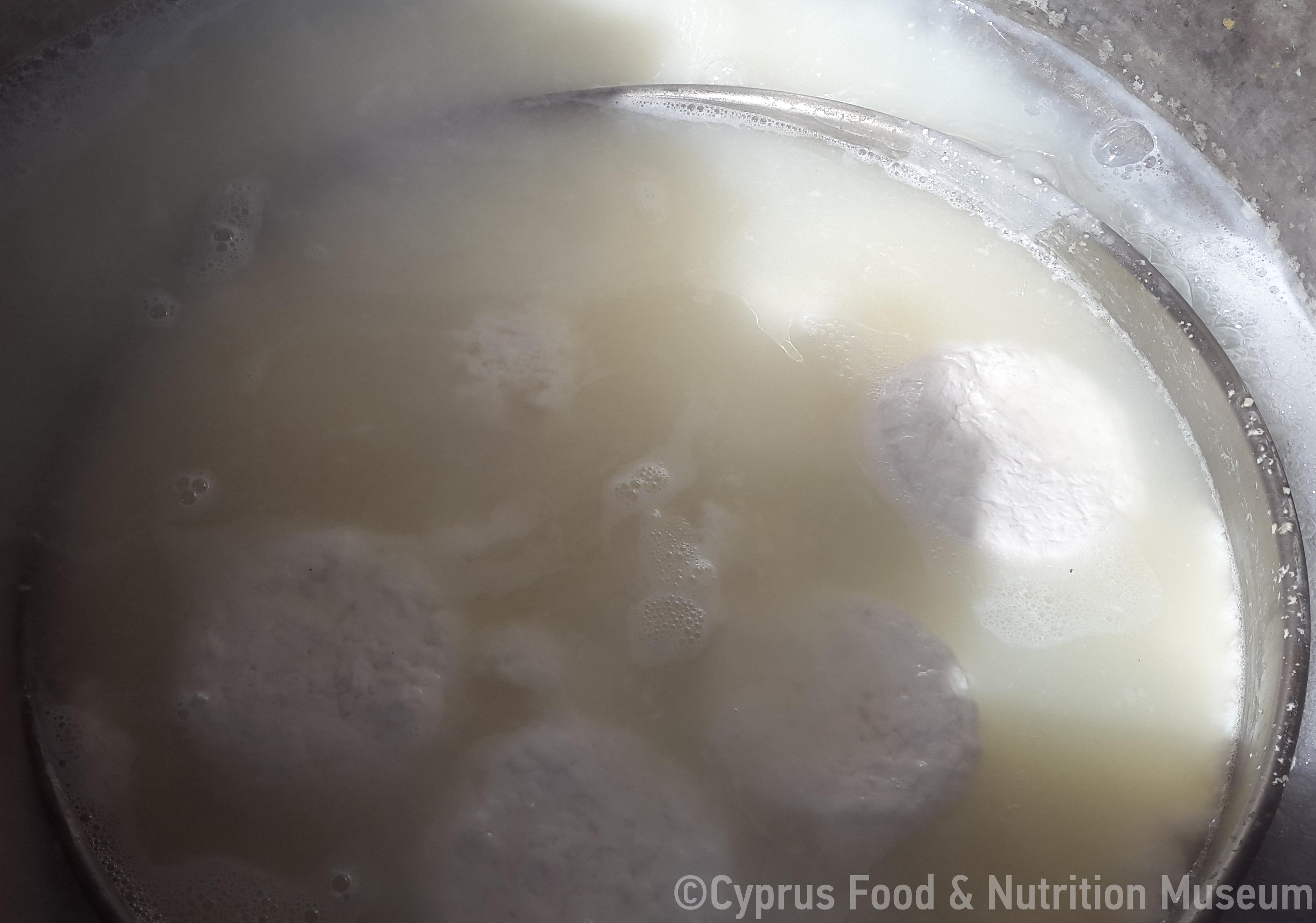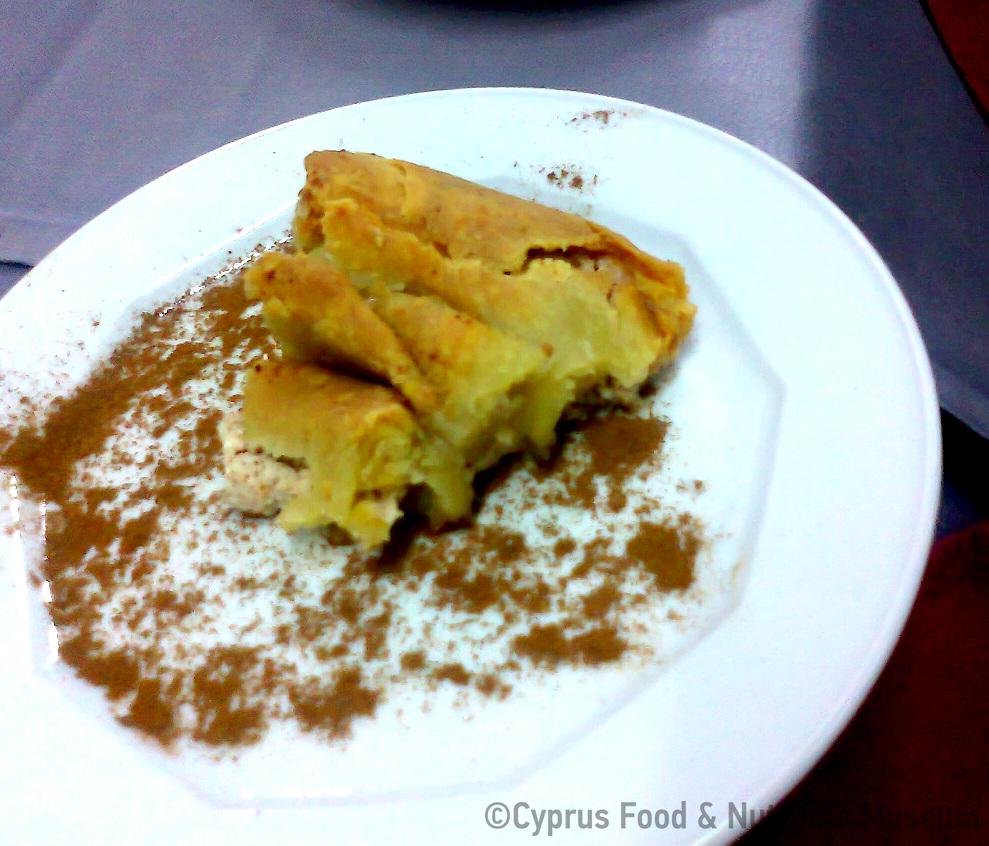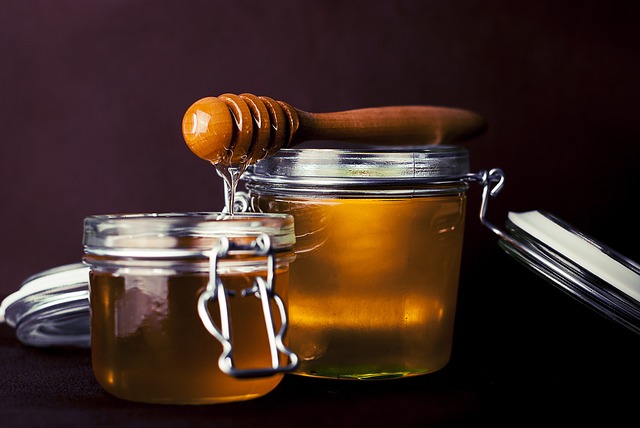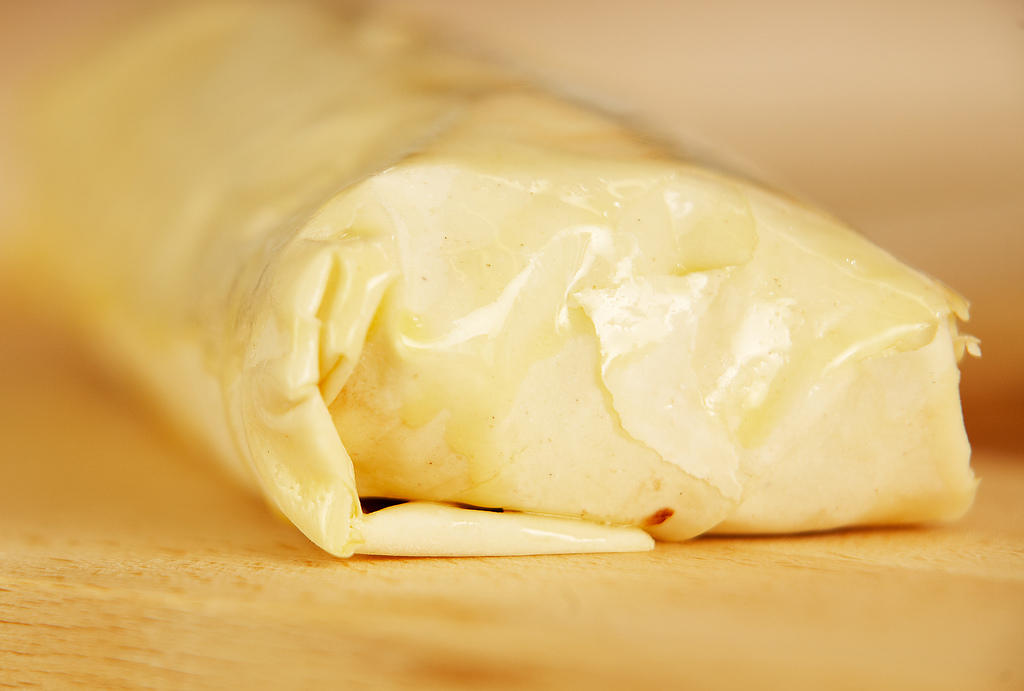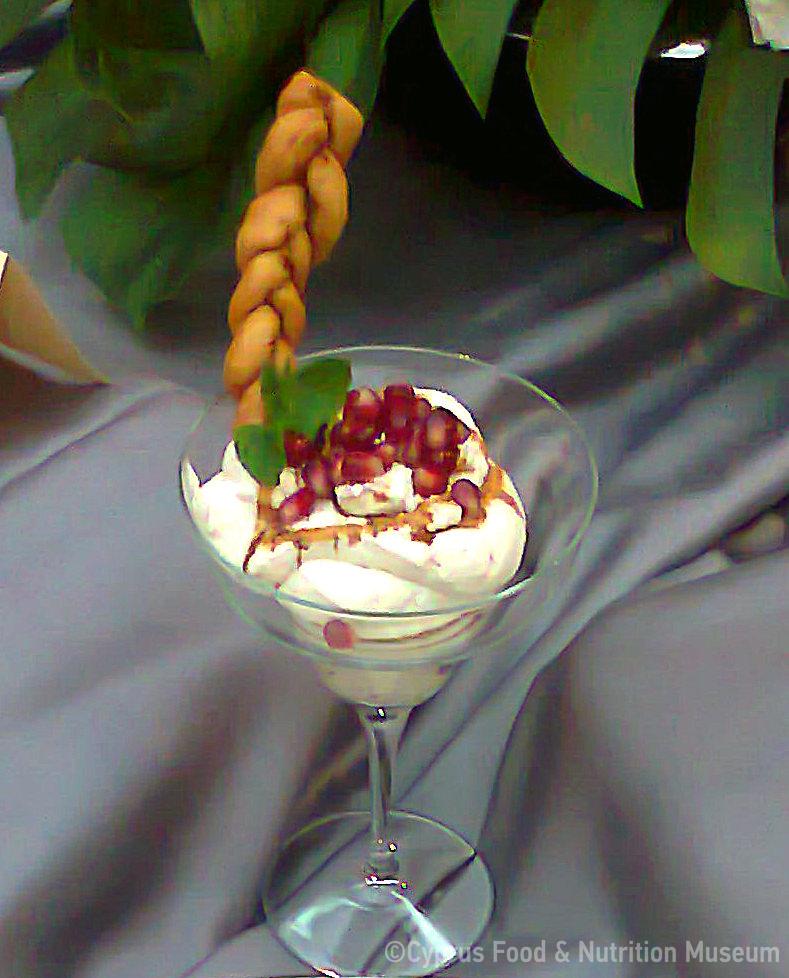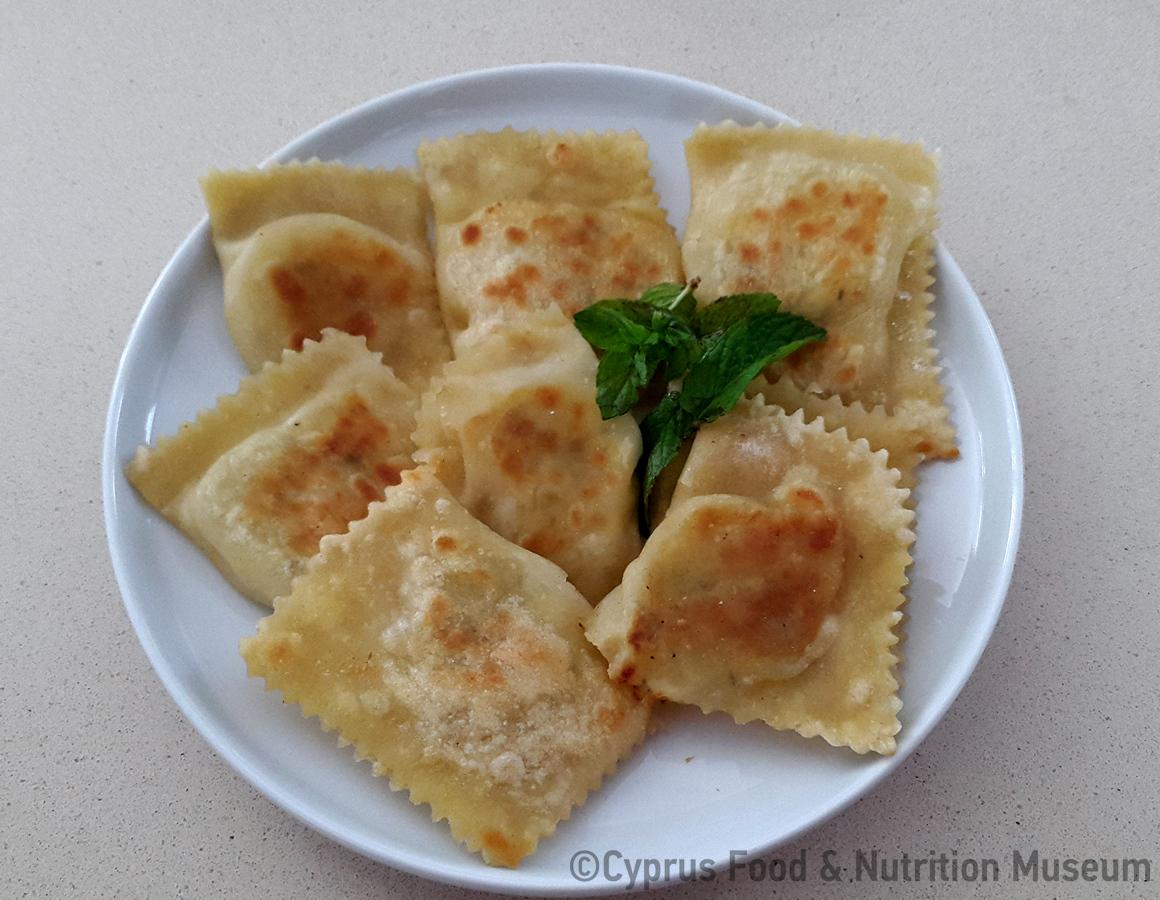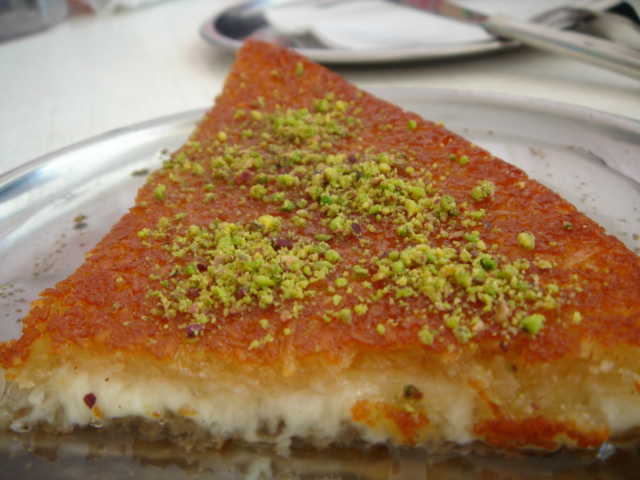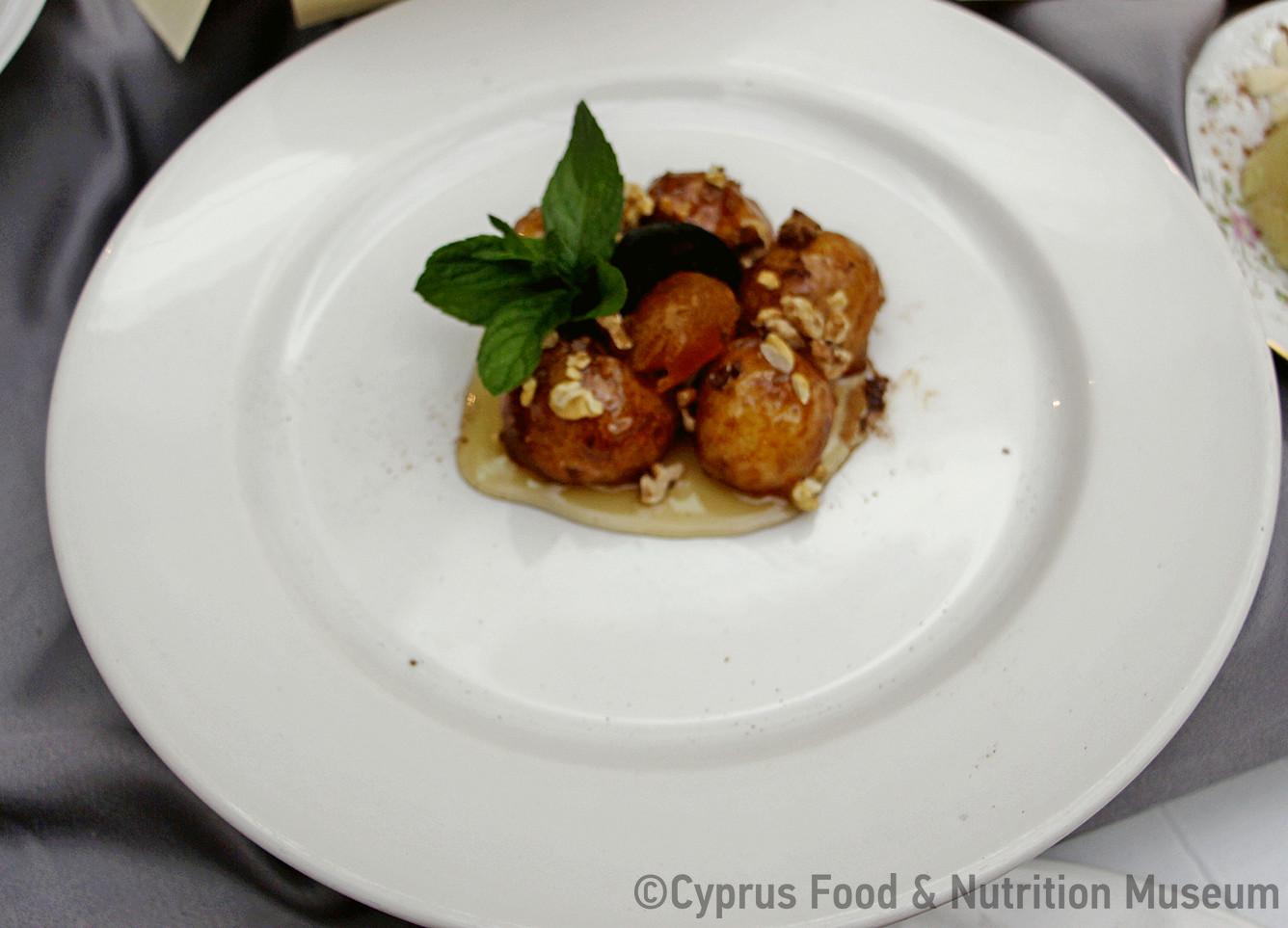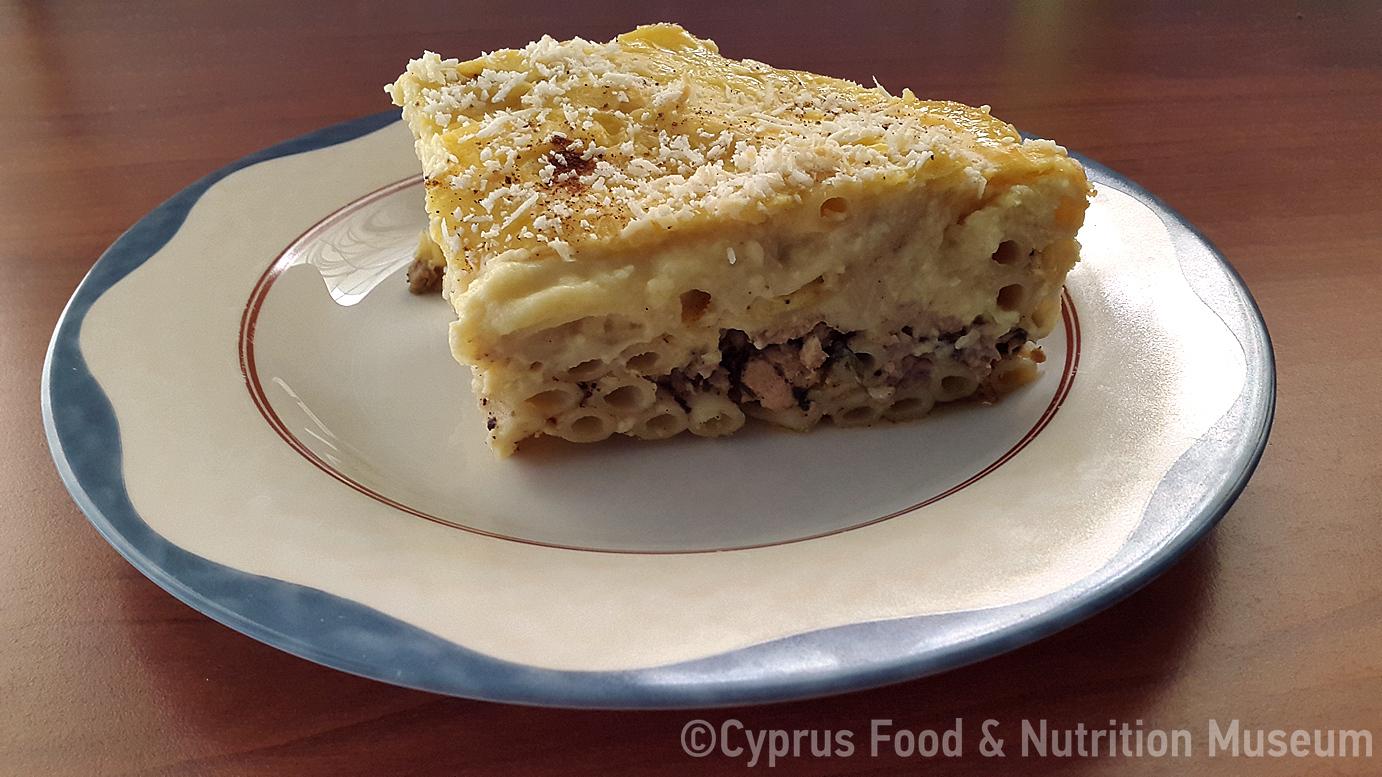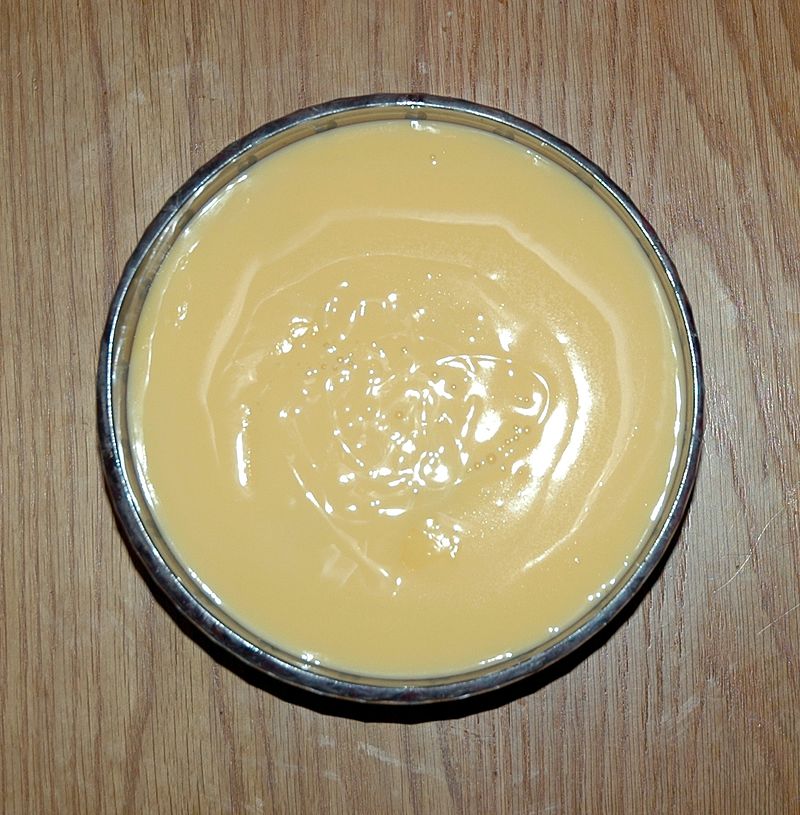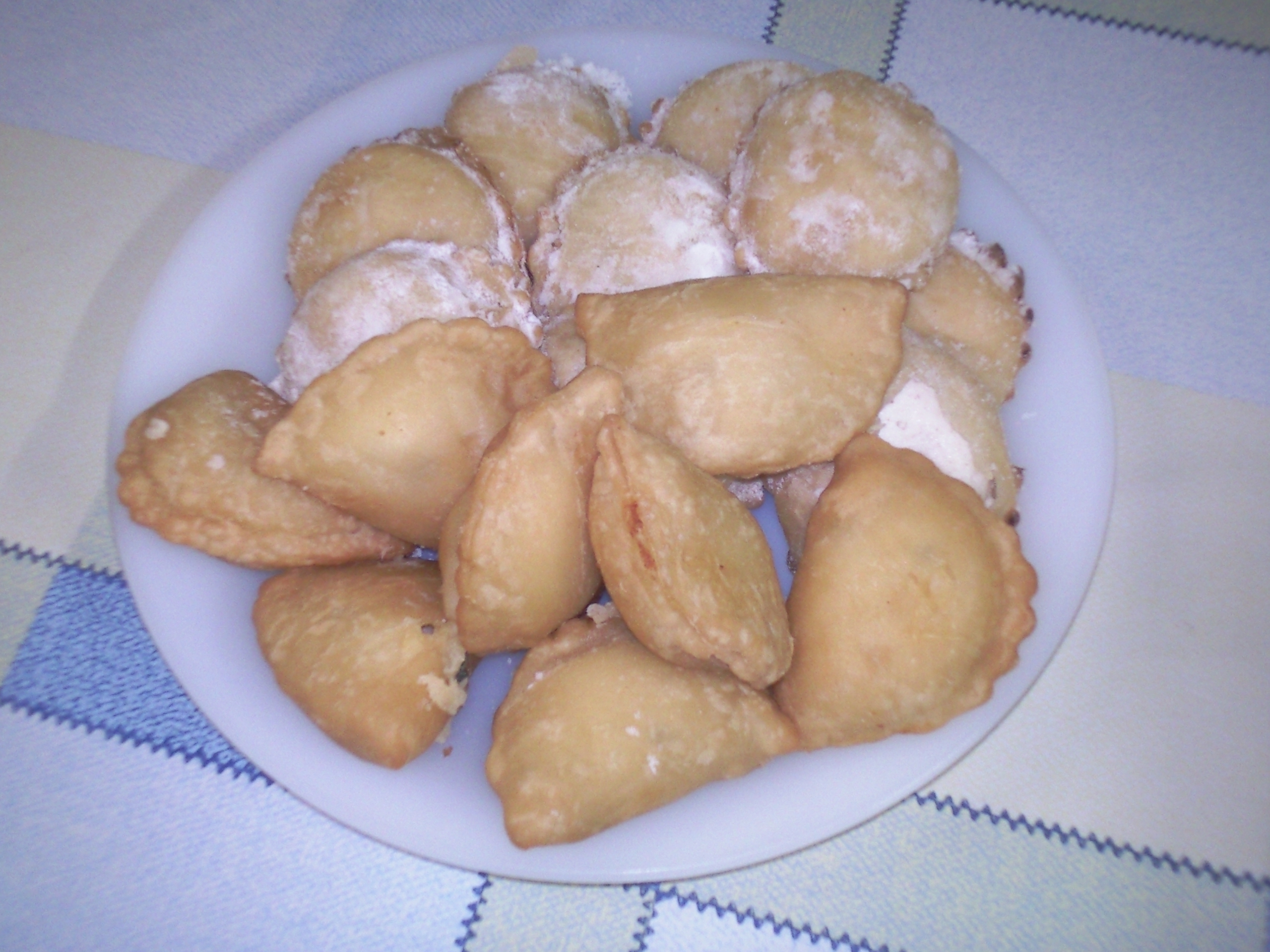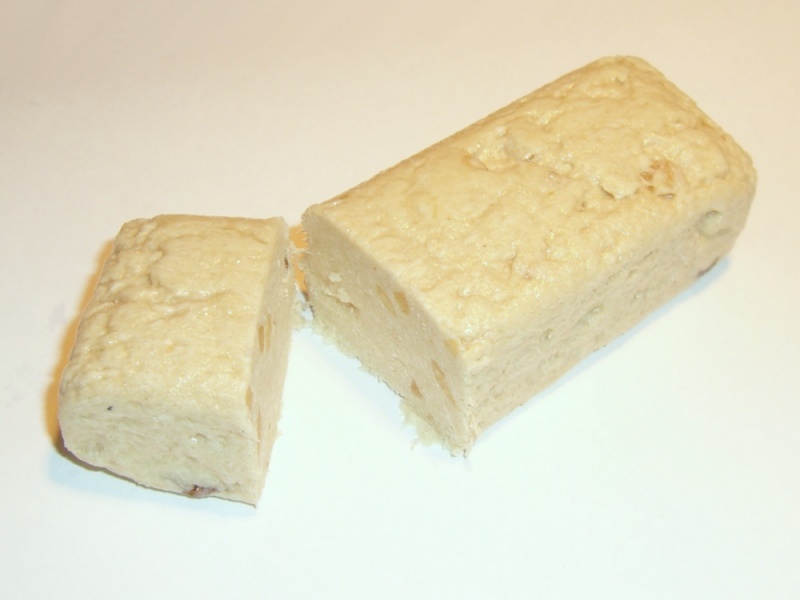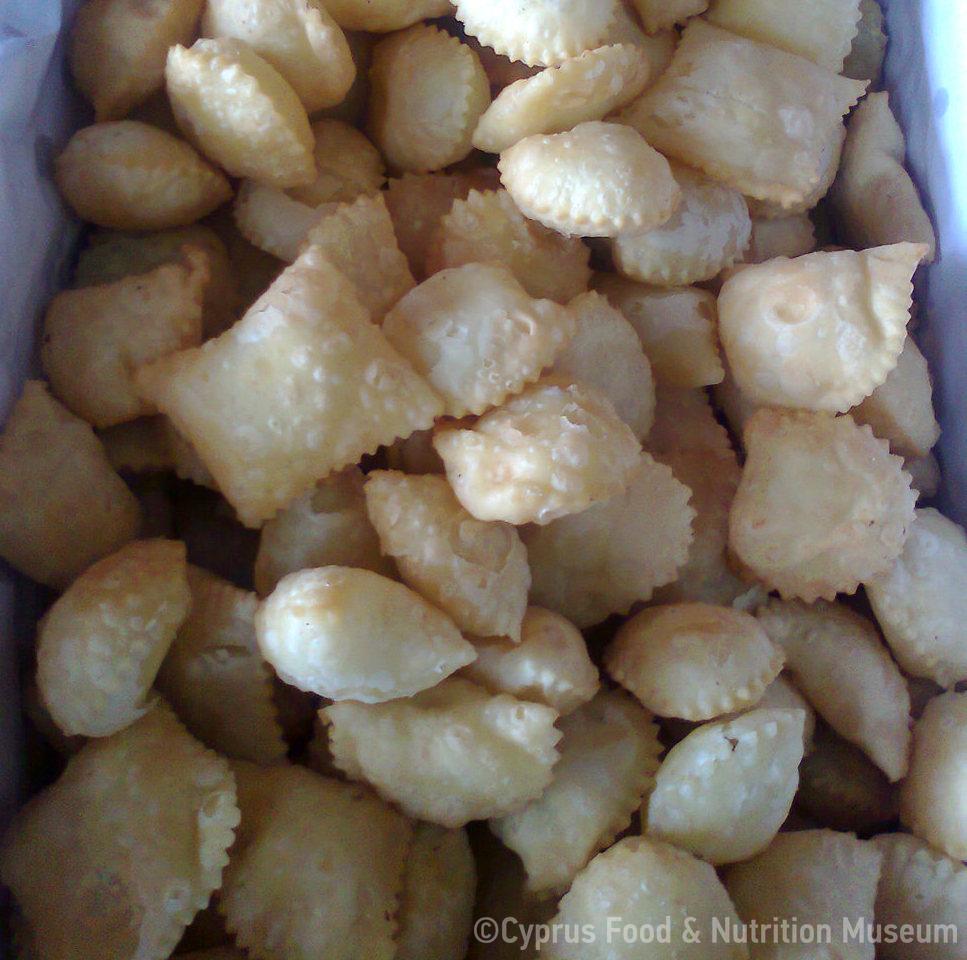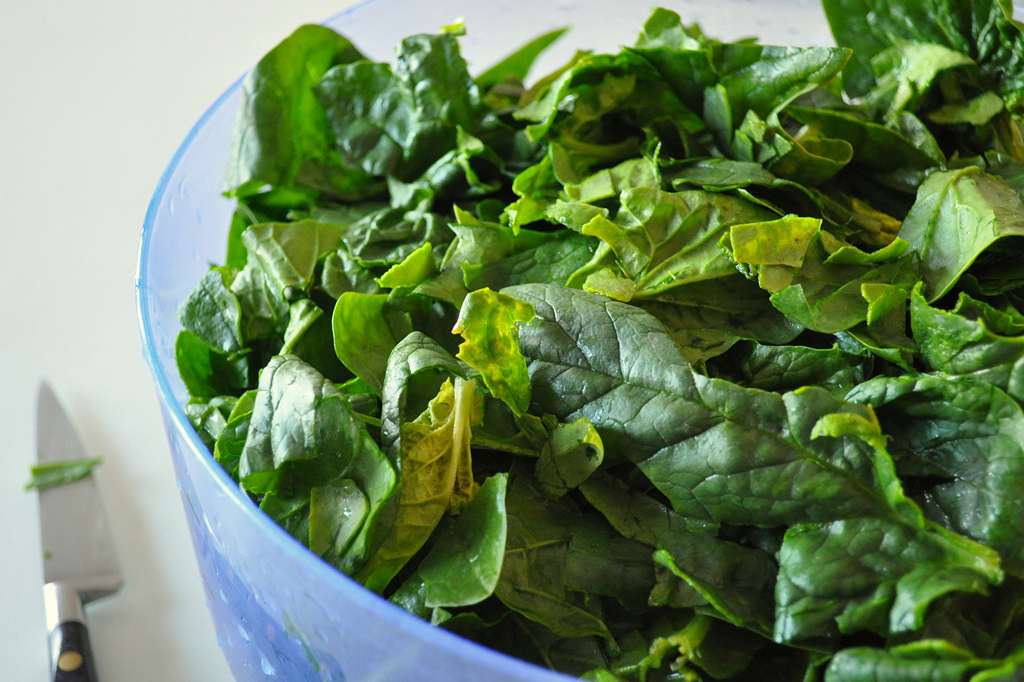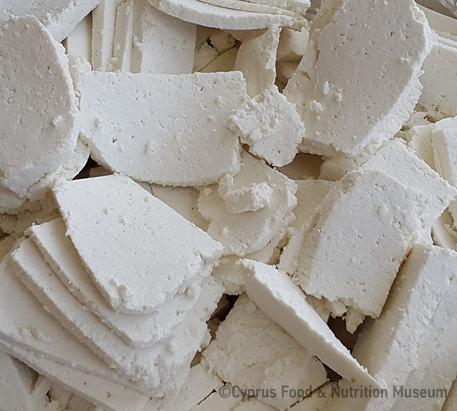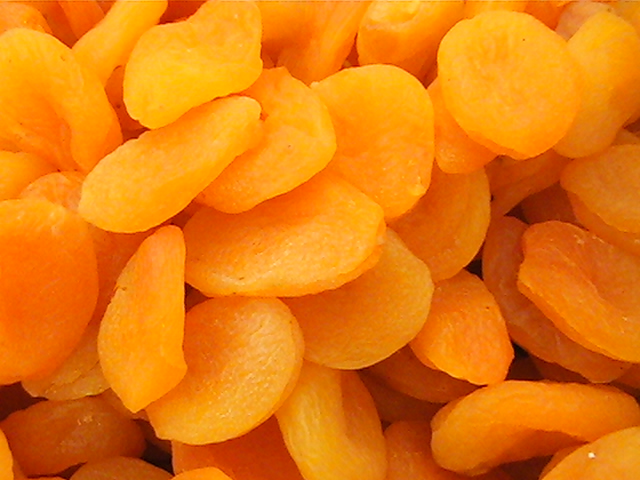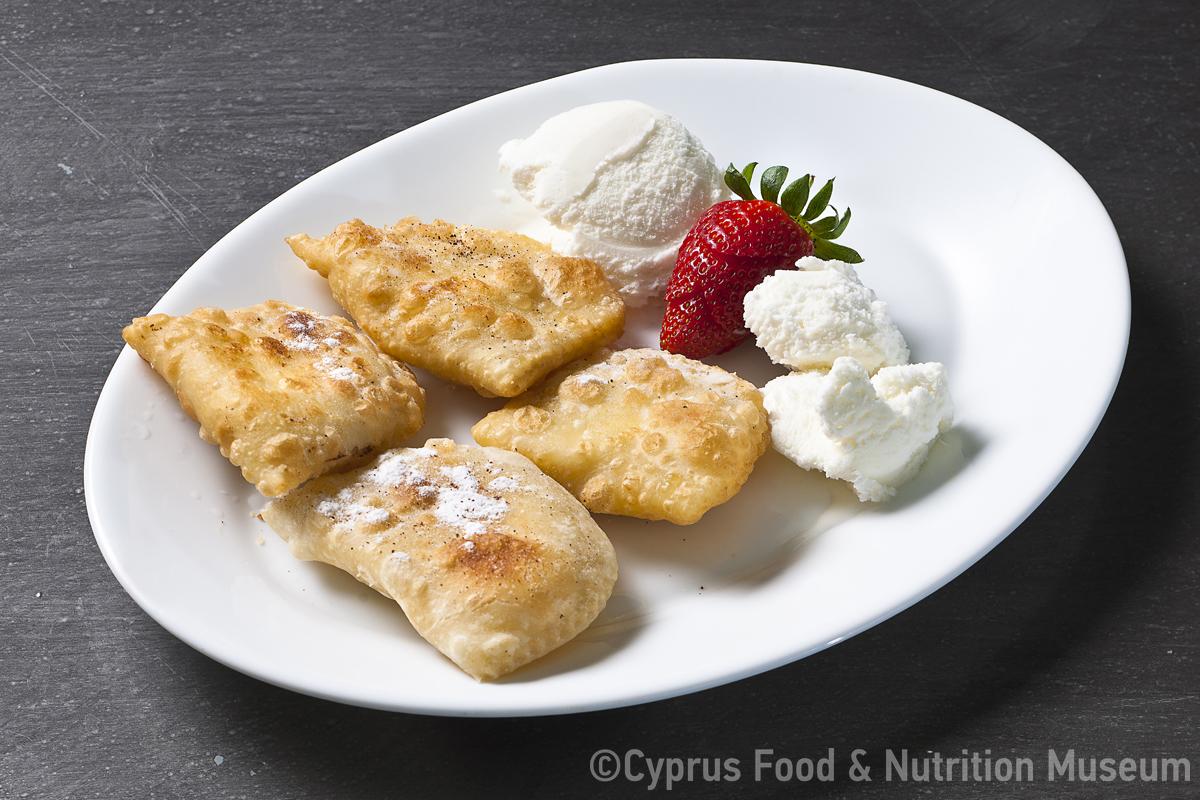Pourekia with halloumi are among the most common fried pourekia, along with pourekia with anari or cream or minced meat.
Name - Recipe
Μπουρέκια γεμισμένα με μυζήθρα.
Version A:
½ kg village flour
1 ½ glasses of water
⅕ cup peanut oil
1 tsp of salt
½ kg fresh unsalted anari
a little cinnamon
2-3 tbsp sugar
a little rose water
icing sugar for sprinkling
Version B:
For the filling:
1 kg unsalted anari
2 tsp cinnamon
½ to 1 cup of sugar (to taste)
½ cup citrus water or rose water
For the dough:
8 cups flour
1 cup of olive oil
2 ½ cups of water
Version C:
For the dough:
500g plain flour 00 (farina)
a little salt
60ml peanut or sunflower oil & 30ml olive oil
200ml lukewarm water
For the filling:
500g fresh, unsalted anari
½ cup of sugar
1 tsp cinnamon
a little fresh spearmint, finely chopped
oil for frying
icing sugar
Version A΄:
In a bowl, sift the flour. Add the flour, pour the oil and water, add a teaspoon of salt and knead. When the dough is well kneaded, form a ball and put it in a nylon bag to rest for about 2 hours. In a large bowl, put the anari, add the cinnamon, sugar and a bit of rosewater and mash the anari with a fork., mixing all the ingredients together. Sprinkle some flour to the table, roll the dough to a pastry sheet and cut squares of about 10x10cm each. Take ½ a tablespoon of the anari filling and place it on the dough sheet on each square, fold the dough and cut with a glass to form a crescent. In a pan, heat the oil and fry the pourekia. Turn them once and when cooked, either transfer them into a strainer to drain or place them on a platter lined with paper. Sprinkle icing sugar and serve (Oral testimony: Marina Kattou, 65 years old, Vouni - Limassol).
Version B΄:
Prepare the dough. Roll it out into a thin pastry sheet. Cut it into even square pieces of about 10x10cm and add 1 tbsp of the filling on each one. Fold it and cut it with a glass to form a crescent. Fry the pourekia in plenty of hot oil until golden. Then put them in a strainer to drain. Place them on a platter and sprinkle with icing sugar (Ministry of Agriculture 2010, Cypriot traditional preparations, 52-53).
Version C΄:
Mix the flour with the peanut or sunflower oil and the olive oil. Add salt and water and knead. Let it rest until you prepare the filling. In a bowl, mash the anari with a fork, add the sugar, cinnamon and spearmint and mix. Roll out the dough into a thin pastry sheet (if you are using a pasta machine, reach to the stage before last). Place half a teaspoon of filling on the edge of the sheet, fold and cut into a rectangle measuring about 3 x 6 cm. You will get approx 70 small pourekia. Fry in hot oil, transfer to a platter with paper to absorb the oil and sprinkle with icing sugar. (Oral testimony: Theognosia Andreou Kornos - Nicosia. Recipe editing: Ioannidou Marilena, Little Volunteers and Women's Association of Kornos 2009).
Frying.
In a variation of these pourekia, recorded in the book "Dikomo. Yesterday and today” by George I. Mavrokordatos, eggs are added to the filling. (Mavrokordatos 2003, 306-307).
Functional and symbolic role
In old times, they used to make them during Christmas, Carnival and Easter. Nowadays, they are particularly consumed on cheesefare Sunday (before Lent begins).
Additional information and bibliography
Interview from Mrs.. Marina Kattou:
Question: Did you make any changes to the recipe? Answer: No, I didn’t change the recipe. In the old days, they would make bigger pourekia, at almost the size of a plate. In the old days, there was no gas or electric cooker. We would place 2 large stones and wood in between (called niskiá) and on top we would place the pan or the pot to fry them.
Question: Is this a local recipe? Where else do they make it? Answer: Here in Vouni but also in many other villages. Pourekia with anari are prepared in all the other villages
Question: "How often do you make pourekia with anari now?" Answer: Whenever we crave for them.
Question: How often you used to make them before? Answer: Every holiday. Especially on Easter, Christmas and the day before Lent. Three times a year (oral testimony: Marina Kattou, 65 years old, Vouni - Limassol).
Mavrokordatos G. I. (2003), Dikomo: Yesterday and today, Nicosia.
Little volunteers and Women’s Association of Kornos (2009), traditional foods of Kornos, Ioannidou M. (ed.), Kornos.
Ministry of Agriculture, Natural Resources and Environment, Department of Agriculture (2010), Cypriot traditional preparations, Press and Information Office, Nicosia.
Oral testimony: Marina Kattou, 65 years old, Vouni - Limassol. Recording: Zenovia Charalambous, October 2010. Edited by: Stalo Lazarou.
Zenovia Charalambous/ Stalo Lazarou, Varvara Yangou, Savvas Polyviou, Argyro Xenofontos


